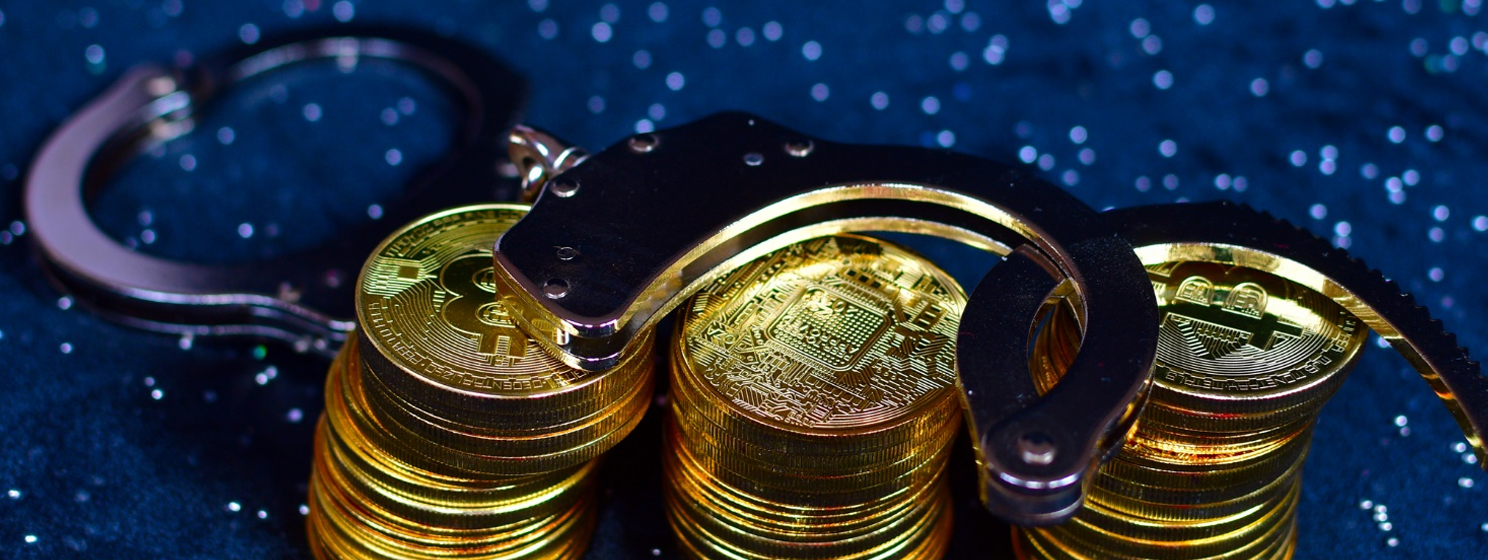|
Getting your Trinity Audio player ready...
|
‘Crypto’ money laundering crackdowns should focus on those dastardly foreigners, not noble and upstanding American operators, says American venture capital group Andreessen Horowitz (a16z).
On October 14, Michele Korver and Jai Ramaswamy, respectively, the chief regulatory and legal officers at the tech-focused a16z, posted a blog detailing “concrete steps to address money laundering” involving digital assets.
The authors start with the obvious, saying “combating money laundering is really hard” due to it mimicking legitimate activity. But they argue that “money laundering is never the cause of criminal activity,” therefore, it’s “not a crypto-specific problem.”
The authors point out that money laundering existed before ‘crypto’ and, should crypto ever disappear, its absence “will merely drive the few criminals who use crypto to other tools to move or conceal their ill-gotten gains.” The authors apparently see no connection between crypto’s rise and the subsequent explosion in the volume of ransomware attacks and ‘pig butchering’ scams. Those ‘few’ criminals are mighty busy.
The authors suggest a three-point strategy that includes expanding federal agencies’ extraterritorial jurisdiction to target “overseas bad actors” who have any link to the U.S. financial system; “step up” the Treasury Department’s enforcement capabilities to target non-compliant exchanges, kiosks and other money transmitters; and encourage greater info-sharing between the public and private sectors.
The authors claim their strategy is “tech neutral,” building on the authors’ claim that “it’s widely acknowledged that we don’t and shouldn’t prosecute coders for developing software.”
In truth, it’s not clear how widely this belief is acknowledged, given that successful prosecutions have been conducted and are being conducted against the coders behind the Ethereum-based coin mixing service Tornado Cash, a favorite tool of North Korea’s ‘crypto’ hackers looking to launder their ill-gotten gains.
The Dutch judges who sentenced developer Alexey Pertsev to 64 months in prison this spring noted that “Tornado Cash functions in the way the defendant and his co-founders developed Tornado Cash. So, the operation is completely their responsibility. If the defendant had wanted to have the possibility to take action against abuse, then he should have built it in. But he did not.”
Also, recall that a year ago, after the Treasury slapped sanctions on Tornado Cash, a16z filed an amicus curiae brief decrying the sanctions, saying it raised “serious, far-reaching legal questions that not only affect our portfolio companies, but also the blockchain ecosystem far beyond this case.” So it’s more of an amicus pecuniae, but let’s not quibble.
Everyone’s guilty and no one’s to blame
To back up their argument that crypto is a money laundering afterthought, the a16z authors cited the $3 billion settlement the U.S. Department of Justice (DOJ) reached last week with TD Bank. The Canuck crooks copped to violating the Bank Secrecy Act and money laundering laws that benefited drug traffickers and other crooks.
While there’s no doubt that traditional financial channels are used to launder funds, Treasury’s Financial Crime Enforcement Network (FinCEN) filed its own consent order in the TD case, and—surprise!—there’s a ‘crypto’ component to this saga.
Starting on page 59, FinCEN details a TD Bank customer identified only as Customer Group C, described as “purportedly operating in the sales finance and real estate industries.” Group C originally told TD it didn’t expect its wire transfer activity to exceed $25,000.
In reality, Group C transferred over $1 billion through TD, with over 90% of incoming funds from “a UK-based cryptocurrency exchange” and over 60% of outgoing funds wired to “a Colombian financial institution that also offers virtual asset-related services.”
Despite its original claims to TD Bank, Group C “conducted, on average, over $100 million in wire transfers each month, most of which facilitated apparent third-party cryptocurrency trading and involved high-risk industries and jurisdictions, including Colombia, China, and countries in the Middle East.”
During the period in question, Group C “received more than $650 million from an international cryptocurrency exchange platform, where the purpose, ultimate originators, and source of funds were unknown to TD Bank.”
Clearly, TD Bank’s compliance watchdogs were either asleep at the wheel or outright complicit in allowing these unspecified crypto entities to color outside the regulatory lines. And the fact that no TD execs appear to be going to prison does boil one’s blood. But Garland said the DOJ wasn’t necessarily finished filing prosecutions in this case, so we’ll wait for the other shoe to drop.
Pump up the volume
On October 16, a16z released the latest installment of its annual ‘State of Crypto Report,’ which (surprise!) claims that crypto’s future is so bright that a16z founders Marc Andreessen and Ben Horowitz gotta wear shades.
The report’s key takeaways include crypto “activity and usage” hitting all-time highs. That’s kinda odd, because crypto news sites keep expressing unease over the fact that transaction and trading volume of the dominant BTC token remains in the dumps, despite a surge in the token’s fiat value.
This phenomenon is particularly pronounced at the retail level, suggesting the unwashed masses have washed their hands of any lingering interest in converting their savings into ‘crypto.’ But read a little further in a16z’s report, and you discover that the ‘usage’ gains are almost entirely down to users flipping utility-free memecoins for fun and (not very often) profit.
a16z notes that there were 220 million monthly active crypto addresses in September, a new all-time high. But 100 million of these addresses were on Solana while another 22 million were on Base, the Ethereum layer-2 network controlled by the Coinbase (NASDAQ: COIN) exchange.
Both Solana and Base are memecoin factories, churning out thousands of new tokens on a daily basis. Few, if any, of these tokens have any real purpose other than serving as chips in the rigged ‘crypto casinos,’ and even fewer have a shelf life longer than the gestation period of a tsetse fly.
And yet the memecoins keep coming, and people keep betting on them, hoping against hope that if just one token ‘moons’ the returns will be astronomical. Real-money gamblers joke about lotteries being a voluntary tax on people who can’t do math. Memecoins aren’t that different, in that many will play, a tiny handful will make a big score, while the rest never see their money again.
Back in April, a16z’s CTO Eddy Lazzarin declared that memecoins were “undermining the long-term vision of crypto,” adding that “at best, it looks like a risky casino. Or a series of false promises masking a casino.” Guess he missed the internal memo about how bullish all that ‘usage’ was for the sector.
State of denial
Other claims in a16z’s report include crypto becoming “a key political issue” in the 2024 U.S. election. The report omits the fact that crypto-funded political action committees (PACs) are the single biggest outside spender in congressional races and that the largest of these PACs, Fairshake, received nearly one-third of its funding from a16z. And yet none of the crypto-funded campaign ads so much as mention crypto, because it’s just such a key issue for voters.
Stablecoins have (allegedly) “found product-market fit,” accounting for nearly one-third of daily crypto usage. Stablecoins found this fit by “enabling fast, cheap, global payments, among other uses.” In the case of the market-leading USDT (Tether)—which boasts a market cap of $120 billion, nearly 70% of the total stablecoin market cap—those ‘other uses’ include crime. All sorts of crime.
a16z also celebrate the rise of Ethereum Layer 2’s like Base, because transaction fees on these networks plunged following this year’s Dencun upgrade. This has indeed led to a surge in activity (the aforementioned memecoin mania), but it’s also created a drought of transactions on Ethereum’s base layer, meaning the validators who control the network’s proof-of-stake (PoS) consensus mechanism don’t have much to do.
L2’s were intended to address Ethereum’s longstanding scaling bottlenecks, but their success means fewer ETH tokens are being ‘burned’ relative to new ones being issued. This ‘inflationary’ dynamic has been widely blamed for ETH’s failure to keep pace with BTC’s fiat price surge, which may explain why Ethereum co-founder Vitalik Buterin has of late been threatening to rain fire and fury on L2’s that he considers insufficiently ‘decentralized.’
But never mind all that. In a16z’s view, L2’s are proof that Ethereum is “getting more popular—and more efficient—all at once.” After three installments, you come to understand that a16z’s gushing reports might as well come with pom-poms and marching bands, for seldom is heard a discouraging word about that wretched hive of scum and villainy that is ‘crypto.’
Watch: Breaking down solutions to blockchain regulation hurdles

 12-22-2025
12-22-2025 




